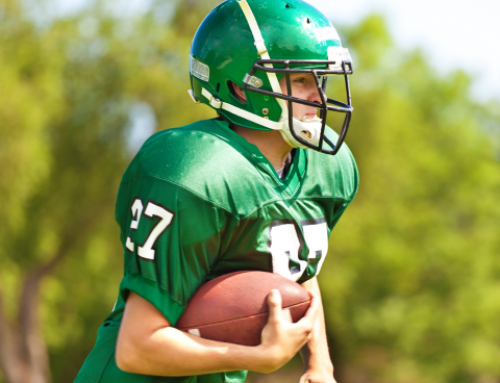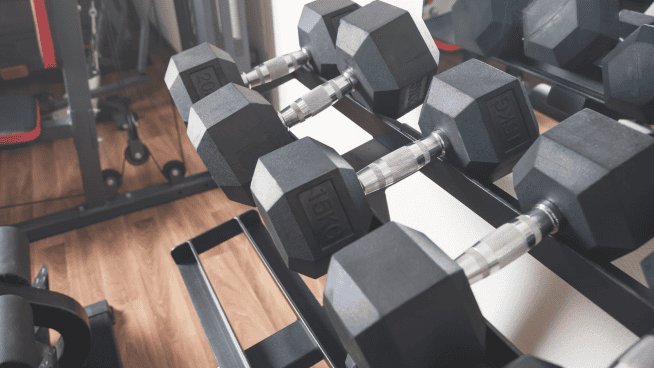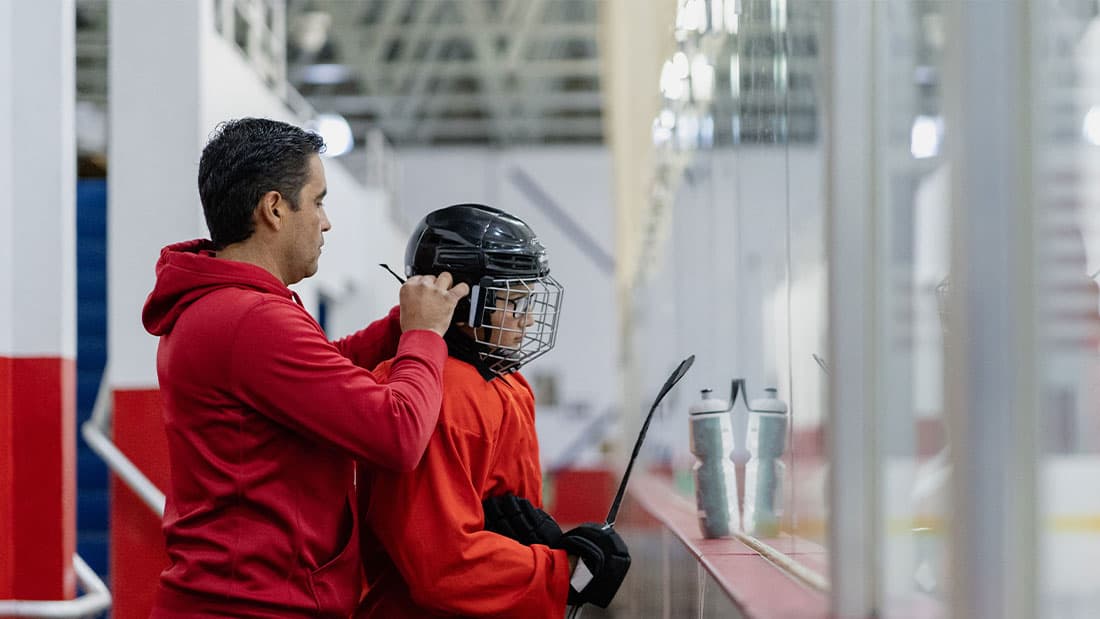The Painful Recovery Method Pro Athletes Like James Harrison, Elena Delle Donne and Anthony Davis Use – Would You Try It?
Athletes get hurt—that’s the risk they take. Bouncing back from injuries (and playing through them) is an important part of long-term athletic success, so finding which recovery methods work best should be a top priority. One interesting technique that’s been taking off in popularity? Dry needling.
Over the past couple of years, athletes like Troy Tulowitzki, Elena Delle Donne, Anthony Davis and James Harrison have used dry needling to treat injuries, and they have experienced great success. What makes it even more interesting is that certain athletes report the method is nearly painless, while others say it’s practically unbearable. So, can dry needling help you rebound from injury and stay sharp? STACK investigates.
What is Dry Needling?

photo from James Harrison’s instagram page
The American Physical Therapy Association defines dry needling as “a skilled intervention that uses a thin filiform needle to penetrate the skin and stimulate underlying myofascial trigger points, muscular, and connective tissues for the management of neuromusculoskeletal pain and movement impairments.”
Translation? Long, thin needles are inserted through the skin and into the muscle in and/or around an inflamed area. It’s called dry needling because the needle isn’t used to inject anything into the body, as is the case with a hypodermic needle.
RELATED: The Science Behind LeBron James’s Amazing Recovery
When an injury occurs, the damaged tissue become inflamed. One of the functions of inflammation is to protect against further damage to the area, and part of this process involves the muscle contracting and tightening. This is a good thing because the muscle is trying to heal itself, but inflammation limits the amount of good blood flow reaching the area. Part of dry needling is looking to hit “trigger points” within the muscle, facilitating a release of tension, which promotes healing.
“Dry needling creates good blood flow,” says Mo Skelton, an Oklahoma-based licensed physical therapist and the owner of Momentum Physical Therapy and Sports Performance. “With an injury, there’s inflammation. It’s a good thing, because that’s the body trying to heal. But you’ve also got trash dumped in there, things like old blood and waste products. Dry needling promotes new blood flow to get that bad stuff out and bring in more good stuff [i.e., oxygen-rich blood].”
This might seem similar to acupuncture, but dry needling is based on western medicine, whereas acupuncture is based on eastern medicine and philosophy. Acupuncture centers around the flow of energy through meridians in the body. Dry needling is based on modern western physiological and anatomical knowledge. Also, dry needling probes significantly deeper into the muscle than traditional acupuncture. Skelton practices what’s known as integrative dry needling, as do many physical therapists.
Where Are the Needles Inserted?

photo from Carmelo Anthony’s instagram page
Much depends on the type of injury and its location. Dry needling involves not only inserting needles into the affected area, but often tracing the nerve that runs through that area and placing needles into the muscles along it.
RELATED: 8 Recovery Foods Recommended by Sports Dietitians
“You’ve got the course of the nerve which is providing sensation and thus pain to the area. So we’ve got muscles along that course of the nerve that we treat as well,” Skelton says. “Hamstrings are innervated by the L5-S1 vertebral segment. So for a hamstring injury, you can go up around the lumbar and then work your way down to the area and into the actual hamstring.”
How Big are the Needles?

Photo courtesy of Akron Children’s Hospital
The length of the needles used depends upon several factors—e.g., injury location, time after injury, acuteness of injury and body type.
Certain areas and body types might do best with a shorter needle, while other areas and body compositions do better with longer ones. “For a guy like James Harrison, he’s a big, thick human being. So if he has a glute problem, you could use a 4-inch needle there because he has so much muscle in that area,” Skelton says. “Areas like the IT Band can accept a 3-inch needle without much trouble.”
RELATED: Why Do So Many NFL Players Go Down with Pre-Season Hamstring Injuries?
In terms of thickness, the needles are very thin—fractions of a millimeter. The 3-inch needles Skelton uses are a mere .3 millimeters in diameter, and his 1.5-inch ones are only .25 millimeters. “It’s a lot finer than the needle you get a shot with,” Skelton says.
What Type of Injuries can be Addressed?

Photo from James Harrison’s instagram page
According to Skelton, “Any sort of muscular or joint pain can be addressed” through the use of dry needling—both acute and chronic. Obviously, some will provide better results than others, but the range of injuries that can potentially be treated via dry needling is almost endless.
Treatment is usually progressive in aggressiveness. In your first session, you probably won’t get 25 3-inch needles stuck directly into your pulled hamstring.
“Early on, we might not do as much until we see the response of the patient. The more you progress, the bigger the needles, the more needles, the more direct you can be with them,” Skelton says.
Dry needling isn’t used exclusively as a reactionary recovery method. It can also be implemented as proactive injury prevention. If you anticipate issues arising over the course of the season, you can use dry needling regularly to stay on top of things. “I’ve got a professional bull rider I work with. He comes in a couple days after every event, and we’ll use dry needling up and down his riding arm, even if there isn’t an ‘injury.’ You can actually use it to prevent tendonitis from showing up, so it’s almost like a preventative method,” Skelton says.
How Badly Does it Hurt?
James Harrison recently described dry needling to ESPN as, “painful as hell.” For a dude as tough as Harrison to say that, it must be pretty awful, right?
Yet other athletes have reported that dry needling is practically painless. So what gives? Is Harrison just a big wuss?
Definitely not. It’s just that the technique used on Harrison is more aggressive and more painful than the technique used on others.
RELATED: 6 Stretches to Alleviate Lower-Back Pain
With acute injuries, the first step is normally to needle around any bruising with short needles to create blood flow and flush out old blood and waste (which pools to form bruises). Once blood flow increases and some bruising disappears, longer needles can be used and the area can be targeted directly. “With acute injuries, people are hypersensitive,” says Skelton. “So we’re not going to go real deep or get real aggressive or even go to the most painful area right away.” With this slow, progressive approach, you’re probably not going to feel a lot of pain.
For chronic injuries, the approach can be more aggressive. Harrison’s dry needling regimen isn’t focused on acute injuries—it’s focused on helping him deal with chronic pain and the wear and tear he’s accumulated over his 13-year NFL career. “With chronic injuries, you can get a little more aggressive with the needle. You can almost purposefully try to create a bruise because you want extra blood flow to that area. Which can certainly make you sore,” Skelton says.
What Are the Risks?
The biggest risks are penetrating the lungs or kidneys with a needle, but that’s unlikely to happen if you’re working with a licensed healthcare provider who’s had proper training.
“The biggest risk is major organs, but if you know anatomy, you know what type of needles and techniques to use in those areas,” Skelton says. “You also want to make sure the needles are kept sterile to avoid infection.”
Does it Work?

photo courtesy of Getty Images
Dry needling certainly seems to work for a lot of athletes.
Harrison swears by it. Delle Donne’s back pain was considerably lessened in just two weeks when she integrated dry needling into her treatment. It helped Anthony Davis play through back spasms, and Matt Flynn credits it with reduced pain in his throwing arm. Countless other athletes have also reported great results.
“The reason it’s growing in popularity is because it works,” declares Skelton. “It’s not really a new thing, but more people are finding it works and it’s sort an emerging trend in physical therapy. More athletes are experiencing it.”
In terms of research, doctors are still grappling with exactly how it works, and the research is still slightly murky. A study from the Journal of the American Board of Family Medicine concluded that dry needling is “minimally invasive, cheap, easy to learn and carries a low risk. Its effectiveness has been confirmed in numerous studies and two comprehensive systematic reviews.” However, the validity of this research has been questioned by critics, and there hasn’t yet been a quality large, controlled study that evaluates the effects of dry needling.
Dry needling is almost always used in conjunction with more traditional treatment methods like soft tissue massage, muscle stimulation, stretching, icing and exercise, so it’s hard to say definitely that dry needling alone is producing great results. Needling releases natural opioids within the body, which are pain-relievers, and this could certainly help people feel better even if it’s not a long-term fix.
The dangers of dry needling are minimal, so it’s up to you whether to pursue it as a treatment. However, it’s important to seek out a licensed healthcare provider who has certification and practice in the application of dry needling. This is not something your average personal trainer at the gym is trained to do. Consult your team doctor or physical therapist to see if dry needling is something they would recommend.
RECOMMENDED FOR YOU
MOST POPULAR
The Painful Recovery Method Pro Athletes Like James Harrison, Elena Delle Donne and Anthony Davis Use – Would You Try It?
Athletes get hurt—that’s the risk they take. Bouncing back from injuries (and playing through them) is an important part of long-term athletic success, so finding which recovery methods work best should be a top priority. One interesting technique that’s been taking off in popularity? Dry needling.
Over the past couple of years, athletes like Troy Tulowitzki, Elena Delle Donne, Anthony Davis and James Harrison have used dry needling to treat injuries, and they have experienced great success. What makes it even more interesting is that certain athletes report the method is nearly painless, while others say it’s practically unbearable. So, can dry needling help you rebound from injury and stay sharp? STACK investigates.
What is Dry Needling?

photo from James Harrison’s instagram page
The American Physical Therapy Association defines dry needling as “a skilled intervention that uses a thin filiform needle to penetrate the skin and stimulate underlying myofascial trigger points, muscular, and connective tissues for the management of neuromusculoskeletal pain and movement impairments.”
Translation? Long, thin needles are inserted through the skin and into the muscle in and/or around an inflamed area. It’s called dry needling because the needle isn’t used to inject anything into the body, as is the case with a hypodermic needle.
RELATED: The Science Behind LeBron James’s Amazing Recovery
When an injury occurs, the damaged tissue become inflamed. One of the functions of inflammation is to protect against further damage to the area, and part of this process involves the muscle contracting and tightening. This is a good thing because the muscle is trying to heal itself, but inflammation limits the amount of good blood flow reaching the area. Part of dry needling is looking to hit “trigger points” within the muscle, facilitating a release of tension, which promotes healing.
“Dry needling creates good blood flow,” says Mo Skelton, an Oklahoma-based licensed physical therapist and the owner of Momentum Physical Therapy and Sports Performance. “With an injury, there’s inflammation. It’s a good thing, because that’s the body trying to heal. But you’ve also got trash dumped in there, things like old blood and waste products. Dry needling promotes new blood flow to get that bad stuff out and bring in more good stuff [i.e., oxygen-rich blood].”
This might seem similar to acupuncture, but dry needling is based on western medicine, whereas acupuncture is based on eastern medicine and philosophy. Acupuncture centers around the flow of energy through meridians in the body. Dry needling is based on modern western physiological and anatomical knowledge. Also, dry needling probes significantly deeper into the muscle than traditional acupuncture. Skelton practices what’s known as integrative dry needling, as do many physical therapists.
Where Are the Needles Inserted?

photo from Carmelo Anthony’s instagram page
Much depends on the type of injury and its location. Dry needling involves not only inserting needles into the affected area, but often tracing the nerve that runs through that area and placing needles into the muscles along it.
RELATED: 8 Recovery Foods Recommended by Sports Dietitians
“You’ve got the course of the nerve which is providing sensation and thus pain to the area. So we’ve got muscles along that course of the nerve that we treat as well,” Skelton says. “Hamstrings are innervated by the L5-S1 vertebral segment. So for a hamstring injury, you can go up around the lumbar and then work your way down to the area and into the actual hamstring.”
How Big are the Needles?

Photo courtesy of Akron Children’s Hospital
The length of the needles used depends upon several factors—e.g., injury location, time after injury, acuteness of injury and body type.
Certain areas and body types might do best with a shorter needle, while other areas and body compositions do better with longer ones. “For a guy like James Harrison, he’s a big, thick human being. So if he has a glute problem, you could use a 4-inch needle there because he has so much muscle in that area,” Skelton says. “Areas like the IT Band can accept a 3-inch needle without much trouble.”
RELATED: Why Do So Many NFL Players Go Down with Pre-Season Hamstring Injuries?
In terms of thickness, the needles are very thin—fractions of a millimeter. The 3-inch needles Skelton uses are a mere .3 millimeters in diameter, and his 1.5-inch ones are only .25 millimeters. “It’s a lot finer than the needle you get a shot with,” Skelton says.
What Type of Injuries can be Addressed?

Photo from James Harrison’s instagram page
According to Skelton, “Any sort of muscular or joint pain can be addressed” through the use of dry needling—both acute and chronic. Obviously, some will provide better results than others, but the range of injuries that can potentially be treated via dry needling is almost endless.
Treatment is usually progressive in aggressiveness. In your first session, you probably won’t get 25 3-inch needles stuck directly into your pulled hamstring.
“Early on, we might not do as much until we see the response of the patient. The more you progress, the bigger the needles, the more needles, the more direct you can be with them,” Skelton says.
Dry needling isn’t used exclusively as a reactionary recovery method. It can also be implemented as proactive injury prevention. If you anticipate issues arising over the course of the season, you can use dry needling regularly to stay on top of things. “I’ve got a professional bull rider I work with. He comes in a couple days after every event, and we’ll use dry needling up and down his riding arm, even if there isn’t an ‘injury.’ You can actually use it to prevent tendonitis from showing up, so it’s almost like a preventative method,” Skelton says.
How Badly Does it Hurt?
James Harrison recently described dry needling to ESPN as, “painful as hell.” For a dude as tough as Harrison to say that, it must be pretty awful, right?
Yet other athletes have reported that dry needling is practically painless. So what gives? Is Harrison just a big wuss?
Definitely not. It’s just that the technique used on Harrison is more aggressive and more painful than the technique used on others.
RELATED: 6 Stretches to Alleviate Lower-Back Pain
With acute injuries, the first step is normally to needle around any bruising with short needles to create blood flow and flush out old blood and waste (which pools to form bruises). Once blood flow increases and some bruising disappears, longer needles can be used and the area can be targeted directly. “With acute injuries, people are hypersensitive,” says Skelton. “So we’re not going to go real deep or get real aggressive or even go to the most painful area right away.” With this slow, progressive approach, you’re probably not going to feel a lot of pain.
For chronic injuries, the approach can be more aggressive. Harrison’s dry needling regimen isn’t focused on acute injuries—it’s focused on helping him deal with chronic pain and the wear and tear he’s accumulated over his 13-year NFL career. “With chronic injuries, you can get a little more aggressive with the needle. You can almost purposefully try to create a bruise because you want extra blood flow to that area. Which can certainly make you sore,” Skelton says.
What Are the Risks?
The biggest risks are penetrating the lungs or kidneys with a needle, but that’s unlikely to happen if you’re working with a licensed healthcare provider who’s had proper training.
“The biggest risk is major organs, but if you know anatomy, you know what type of needles and techniques to use in those areas,” Skelton says. “You also want to make sure the needles are kept sterile to avoid infection.”
Does it Work?

photo courtesy of Getty Images
Dry needling certainly seems to work for a lot of athletes.
Harrison swears by it. Delle Donne’s back pain was considerably lessened in just two weeks when she integrated dry needling into her treatment. It helped Anthony Davis play through back spasms, and Matt Flynn credits it with reduced pain in his throwing arm. Countless other athletes have also reported great results.
“The reason it’s growing in popularity is because it works,” declares Skelton. “It’s not really a new thing, but more people are finding it works and it’s sort an emerging trend in physical therapy. More athletes are experiencing it.”
In terms of research, doctors are still grappling with exactly how it works, and the research is still slightly murky. A study from the Journal of the American Board of Family Medicine concluded that dry needling is “minimally invasive, cheap, easy to learn and carries a low risk. Its effectiveness has been confirmed in numerous studies and two comprehensive systematic reviews.” However, the validity of this research has been questioned by critics, and there hasn’t yet been a quality large, controlled study that evaluates the effects of dry needling.
Dry needling is almost always used in conjunction with more traditional treatment methods like soft tissue massage, muscle stimulation, stretching, icing and exercise, so it’s hard to say definitely that dry needling alone is producing great results. Needling releases natural opioids within the body, which are pain-relievers, and this could certainly help people feel better even if it’s not a long-term fix.
The dangers of dry needling are minimal, so it’s up to you whether to pursue it as a treatment. However, it’s important to seek out a licensed healthcare provider who has certification and practice in the application of dry needling. This is not something your average personal trainer at the gym is trained to do. Consult your team doctor or physical therapist to see if dry needling is something they would recommend.













